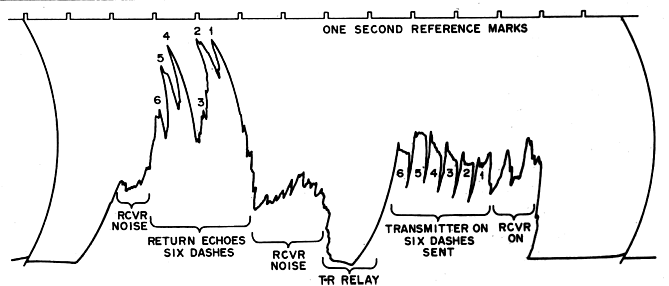 | ||
160m long delayed echoes in alaska
Long delayed echoes (LDEs) are radio echoes which return to the sender several seconds after a radio transmission has occurred. Delays of longer than 2.7 seconds are considered LDEs. LDEs have a number of proposed scientific origins.
Contents
- 160m long delayed echoes in alaska
- Mindwave long delayed echoes
- History
- Five hypotheses
- Alternative hypotheses
- Deception
- References
Mindwave long delayed echoes
History
These echoes were first observed in 1927 by civil engineer and amateur radio operator Jørgen Hals from his home near Oslo, Norway. Hals had repeatedly observed an unexpected second radio echo with a significant time delay after the primary radio echo ended. Unable to account for this strange phenomenon, he wrote a letter to Norwegian physicist Carl Størmer, explaining the event:
At the end of the summer of 1927 I repeatedly heard signals from the Dutch short-wave transmitting station PCJJ at Eindhoven. At the same time as I heard these I also heard echoes. I heard the usual echo which goes round the Earth with an interval of about 1/7 of a second as well as a weaker echo about three seconds after the principal echo had gone. When the principal signal was especially strong, I suppose the amplitude for the last echo three seconds later, lay between 1/10 and 1/20 of the principal signal in strength. From where this echo comes I cannot say for the present, I can only confirm that I really heard it.
Physicist Balthasar van der Pol helped Hals and Stormer investigate the echoes, but due to the sporadic nature of the echo events and variations in time-delay, did not find a suitable explanation.
Long delayed echoes have been heard sporadically from the first observations in 1927 and up to our time.
Five hypotheses
Shlionskiy lists 15 possible natural explanations in two groups: reflections in outer space, and reflections within the Earth's magnetosphere. Vidmar and Crawford suggest five of them are the most likely. Sverre Holm, professor of signal processing at the University of Oslo details those five; in summary,
Radio waves of frequency less than about 7 MHz can become trapped in magnetic field-aligned ionization ducts with L values (distance from the center of the earth to the field line at the magnetic equator) less than about 4. These waves after being trapped can propagate to the opposite hemisphere where they become reflected in the topside ionosphere. They can return along the duct, leave it, and propagate to the receiver.
The signals from two separated transmitters T1 and T2, T2 transmitting CW or quasi-CW signals, interact nonlinearly in the ionosphere or magnetosphere. If the wave vector and frequency of the forced oscillation at the difference frequency of the two signals satisfies the dispersion relation for electrostatic waves, such waves would exist and begin to propagate. This wave could grow in amplitude due to wave-particle interaction. At a later time it could interact with the CW signal and propagate to T1.
None of these hypotheses can explain everything. Only the first mechanism is well established, and none of the other four are well-established enough to deserve the term "theory". The phenomena are often fleeting and non-repeatable. Our understanding of how the magnetosphere interacts with the solar wind is still evolving.
Alternative hypotheses
Some believe that the aurora activity that follows a solar storm is the source of LDEs.
Still others believe that LDEs are double EME (EMEME) reflections, i.e. the signal is reflected by the moon and that reflected signal is reflected by the Earth back to the moon and reflected again by the moon back to the earth.
Duncan Lunan proposed the radio echoes observed by Størmer and Van der Pol in 1928 might have been transmissions from a Bracewell probe, an artifact of aliens trying to communicate with us by bouncing back our own signals. This concept is also addressed by Holm.
Deception
Volker Grassmann writing in VHF Communications noted the possibility of individuals hoaxing LDEs, saying, "Attempts at deception can in no case be ruled out, and it is to be feared that less serious radio amateurs contribute to deliberate falsification.... Short transmissions using different frequencies are a relatively simple procedure for excluding potential troublemakers." To reduce the possibilities of errors or hoaxes a worldwide logging system has been developed.
